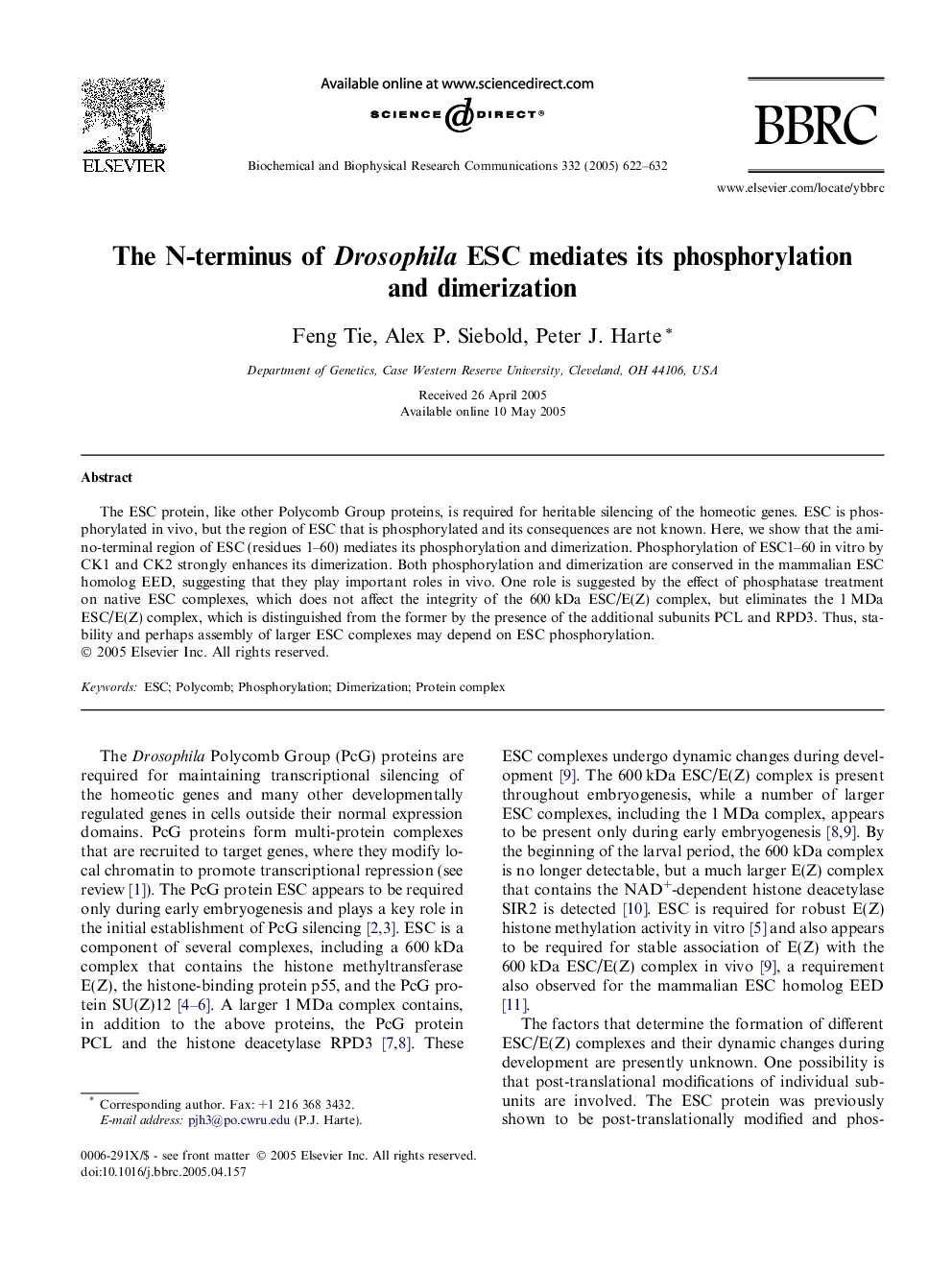| Article ID | Journal | Published Year | Pages | File Type |
|---|---|---|---|---|
| 10768546 | Biochemical and Biophysical Research Communications | 2005 | 11 Pages |
Abstract
The ESC protein, like other Polycomb Group proteins, is required for heritable silencing of the homeotic genes. ESC is phosphorylated in vivo, but the region of ESC that is phosphorylated and its consequences are not known. Here, we show that the amino-terminal region of ESC (residues 1-60) mediates its phosphorylation and dimerization. Phosphorylation of ESC1-60 in vitro by CK1 and CK2 strongly enhances its dimerization. Both phosphorylation and dimerization are conserved in the mammalian ESC homolog EED, suggesting that they play important roles in vivo. One role is suggested by the effect of phosphatase treatment on native ESC complexes, which does not affect the integrity of the 600Â kDa ESC/E(Z) complex, but eliminates the 1Â MDa ESC/E(Z) complex, which is distinguished from the former by the presence of the additional subunits PCL and RPD3. Thus, stability and perhaps assembly of larger ESC complexes may depend on ESC phosphorylation.
Related Topics
Life Sciences
Biochemistry, Genetics and Molecular Biology
Biochemistry
Authors
Feng Tie, Alex P. Siebold, Peter J. Harte,
